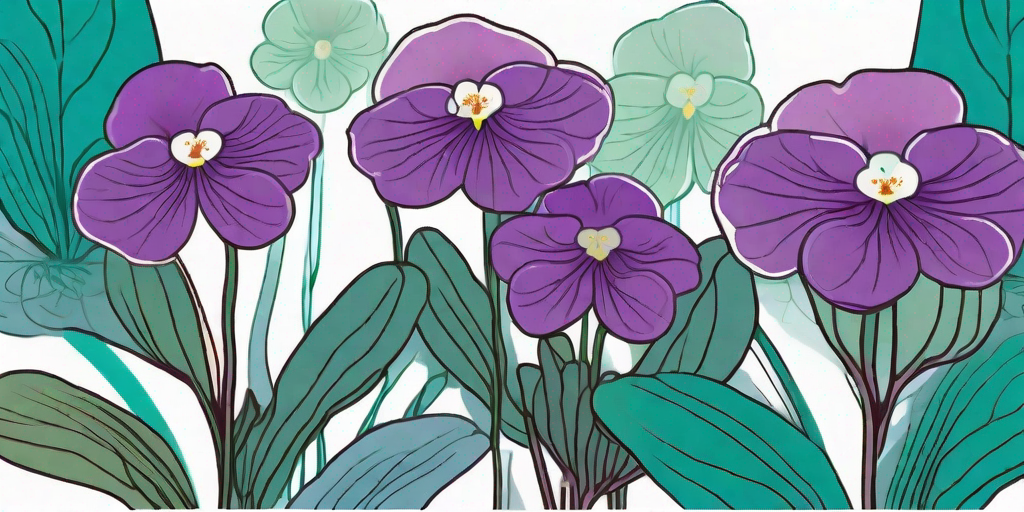
Welcome, green thumbs and flower enthusiasts! Today, we're embarking on an exciting journey into the world of African Violet seeds. These tiny little wonders, when nurtured correctly, can bloom into the most stunning houseplants you've ever seen. So, strap on your gardening gloves, grab your watering can, and let's dive right in!
Understanding the African Violet
Before we get our hands dirty, let's take a moment to appreciate the African Violet. Native to Tanzania and Kenya, this plant is a member of the Gesneriaceae family. It's a bit of a diva, demanding specific care and attention, but the payoff is a spectacular display of velvety leaves and vibrant flowers.
Now, don't let the name fool you. While they can indeed be violet, these beauties also come in a variety of other colors, including blue, pink, white, and even multicolored. It's like a botanical rainbow!
The Life Cycle of an African Violet
African Violets have a fascinating life cycle. It all starts with a tiny seed, which, given the right conditions, will germinate and grow into a mature plant in about six to nine months. That's faster than your average reality TV romance!
The mature plant will then produce flowers, which can last for several weeks. After the flowers fade, the plant will enter a rest period before starting the cycle again. It's the circle of life, plant edition.
How to Grow African Violets from Seeds
Alright, enough chit-chat. Let's get to the nitty-gritty: how to grow these beauties from seeds. It might seem daunting at first, but with a little patience and a lot of love, you'll be a pro in no time.
First things first, you'll need some African Violet seeds. You can purchase these online or from a local nursery. Once you have your seeds, you're ready to get started.
Step 1: Preparing the Soil
African Violets prefer a light, well-draining soil. You can buy a commercial African Violet mix or make your own by combining equal parts peat moss, vermiculite, and perlite. Remember, these plants are a bit picky, so don't skimp on the soil quality!
Step 2: Planting the Seeds
Now comes the fun part: planting the seeds. Sprinkle them on top of the soil and lightly press them in. Don't bury them too deep, as they need light to germinate. It's like they're sunbathing!
Step 3: Caring for Your Seedlings
After planting, keep the soil moist but not waterlogged. Place the pot in a warm, brightly lit area, but avoid direct sunlight, which can scorch the delicate seedlings. It's a bit like caring for a newborn - demanding, but oh so rewarding.
Common Challenges and How to Overcome Them
Like any gardening endeavor, growing African Violets from seeds comes with its own set of challenges. But don't fret, we've got the solutions to keep your plants happy and healthy.
Problem: Poor Germination
If your seeds aren't sprouting, it could be due to a few reasons. The seeds may be old or of poor quality, the soil might not be moist enough, or the temperature could be too low. Try adjusting these factors and see if it helps. Remember, patience is key!
Problem: Leggy Seedlings
If your seedlings are growing tall and thin, they're probably not getting enough light. Move them to a brighter location, but avoid direct sunlight. Think of it as moving them from the basement to the penthouse.
Frequently Asked Questions
- Can I grow African Violets outdoors?
While African Violets are typically grown as houseplants, they can be grown outdoors in USDA zones 11 and 12. However, they need to be protected from direct sunlight and temperatures below 60°F.
- How often should I water my African Violets?
Water your African Violets when the top of the soil feels dry to the touch. However, be careful not to overwater, as this can lead to root rot.
- Do African Violets need fertilizer?
Yes, African Violets benefit from regular feeding. Use a balanced, water-soluble fertilizer every two weeks during the growing season.
Conclusion
And there you have it, folks! A comprehensive guide to unleashing the beauty of African Violet seeds. With a little bit of knowledge and a whole lot of love, you can transform these tiny seeds into a stunning display of botanical beauty. So, what are you waiting for? Get planting!
Remember, gardening is a journey, not a destination. So, enjoy every moment, from the first sprout to the last bloom. Happy gardening!















